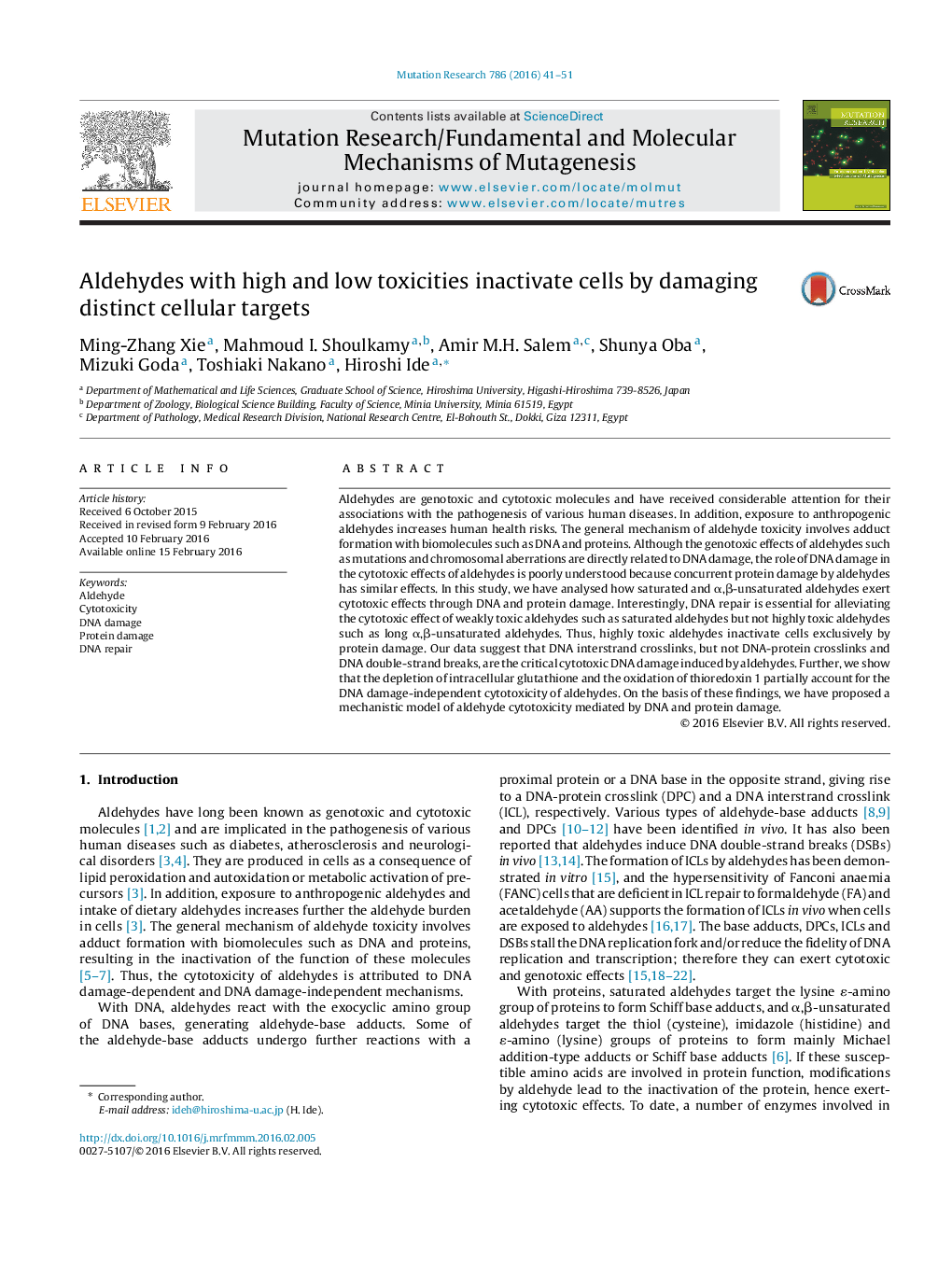| کد مقاله | کد نشریه | سال انتشار | مقاله انگلیسی | نسخه تمام متن |
|---|---|---|---|---|
| 2146164 | 1548314 | 2016 | 11 صفحه PDF | دانلود رایگان |
عنوان انگلیسی مقاله ISI
Aldehydes with high and low toxicities inactivate cells by damaging distinct cellular targets
ترجمه فارسی عنوان
آلدهید با سمیت بالا و کم، سلول ها را با آسیب رساندن به اهداف مشخص سلولی غیرفعال می کند
دانلود مقاله + سفارش ترجمه
دانلود مقاله ISI انگلیسی
رایگان برای ایرانیان
کلمات کلیدی
موضوعات مرتبط
علوم زیستی و بیوفناوری
بیوشیمی، ژنتیک و زیست شناسی مولکولی
تحقیقات سرطان
چکیده انگلیسی
Aldehydes are genotoxic and cytotoxic molecules and have received considerable attention for their associations with the pathogenesis of various human diseases. In addition, exposure to anthropogenic aldehydes increases human health risks. The general mechanism of aldehyde toxicity involves adduct formation with biomolecules such as DNA and proteins. Although the genotoxic effects of aldehydes such as mutations and chromosomal aberrations are directly related to DNA damage, the role of DNA damage in the cytotoxic effects of aldehydes is poorly understood because concurrent protein damage by aldehydes has similar effects. In this study, we have analysed how saturated and α,β-unsaturated aldehydes exert cytotoxic effects through DNA and protein damage. Interestingly, DNA repair is essential for alleviating the cytotoxic effect of weakly toxic aldehydes such as saturated aldehydes but not highly toxic aldehydes such as long α,β-unsaturated aldehydes. Thus, highly toxic aldehydes inactivate cells exclusively by protein damage. Our data suggest that DNA interstrand crosslinks, but not DNA-protein crosslinks and DNA double-strand breaks, are the critical cytotoxic DNA damage induced by aldehydes. Further, we show that the depletion of intracellular glutathione and the oxidation of thioredoxin 1 partially account for the DNA damage-independent cytotoxicity of aldehydes. On the basis of these findings, we have proposed a mechanistic model of aldehyde cytotoxicity mediated by DNA and protein damage.
ناشر
Database: Elsevier - ScienceDirect (ساینس دایرکت)
Journal: Mutation Research/Fundamental and Molecular Mechanisms of Mutagenesis - Volume 786, April 2016, Pages 41-51
Journal: Mutation Research/Fundamental and Molecular Mechanisms of Mutagenesis - Volume 786, April 2016, Pages 41-51
نویسندگان
Ming-Zhang Xie, Mahmoud I. Shoulkamy, Amir M.H. Salem, Shunya Oba, Mizuki Goda, Toshiaki Nakano, Hiroshi Ide,
